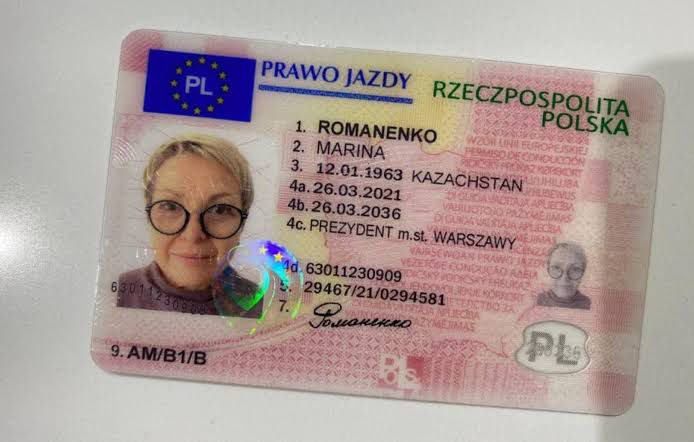prawo-jazdy-online-kurs7730
prawo-jazdy-online-kurs7730
A Brief History Of Driving Licenses B In 10 Milestones
Understanding Driving Licenses: Types, Requirements, and Frequently Asked Questions
Driving is a basic aspect of modern life, and getting a driving license is a vital turning point for numerous individuals. This short article checks out the different types of driving licenses readily available, the requirements to get them, szkoła nauki jazdy wyszków and answers typically asked questions related to the subject. A well-informed perspective on driving licenses can help individuals comprehend the value of selecting the right kind of license to meet their requirements.
Kinds Of Driving Licenses
Driving licenses can vary between nations and regions, but they typically fall under numerous major classifications. The following table sums up the most typical types of driving licenses, including their purposes and typical constraints.
| Type of License | Description | Typical Restrictions | Eligibility Age |
|---|---|---|---|
| Student’s Permit | Allows novice chauffeurs to practice. | Should drive with a certified adult. | 16-18 years of ages |
| Class C License | Requirement license for passenger lorries. | No constraint on variety of passengers. | 18 years or older |
| Class A License | Industrial license for large lorries. | Should stick to more stringent regulations. | 21 years or older |
| Class B License | For driving buses and larger vehicles. | May require unique endorsements. | 21 years or older |
| Motorbike License | For operating motorcycles. | Must use a helmet; varies by state. | 16-18 years of ages |
| International License | Allows legal driving in foreign countries. | Need to possess a valid domestic license. | 18 years or older |
Student’s Permit
The learner’s license is the very first step for numerous individuals venturing into the world of driving. This authorization allows newbie chauffeurs to practice driving under monitored conditions, typically needing a licensed adult over a specific age to accompany them in the automobile.
Class C License
The Class C license is the most frequently held driving license, enabling people to run basic traveler automobiles. This license generally has less limitations compared to other categories.
Class A and B Licenses
Class A and B licenses are necessary for operating industrial automobiles. These licenses need special training and screening, guaranteeing that motorists are geared up with the abilities required for navigating bigger and more intricate automobiles safely.
Bike License
People thinking about riding motorbikes must get a bike license, which can require additional training and testing. Security equipment, such as helmets, is often mandated by law.
International License
An international driving license makes it possible for people to drive in foreign countries, however it is vital to have a valid domestic driving license in combination with the worldwide authorization.
Requirements to Obtain a Driving License
The requirements for getting a driving license can vary substantially by jurisdiction. However, there prevail steps and requirements that a lot of applicants will experience. Below is a list of basic requirements:
-
Age Requirement:
- Minimum age differs; learner’s licenses are typically issued at 16, while complete licenses might require candidates to be 18 or older.
-
Vision Test:
- Most jurisdictions require applicants to pass a vision test to ensure safe driving abilities.
-
Composed Test:
- New drivers should pass a written exam that covers traffic laws, road indications, and safe driving practices.
-
Driving Test:
- Practical driving tests are performed to show a candidate’s capability to run a vehicle safely under different conditions.
-
Costs:
- Payment of application and testing fees is normally required.
-
Proof of Identity:
- Applicants should provide valid recognition, such as a passport or birth certificate, together with proof of residency.
-
Parental Consent (for minors):
- Parental or guardian consent is often required for applicants under the age of 18.
Understanding the various types of driving licenses and their associated requirements is important for anyone seeking to drive lawfully and safely. Each license serves a distinct purpose, catering to various driving needs, from standard cars to industrial transportation and motorcycles. By meeting the needed criteria and adhering to policies, aiming drivers can delight in the liberty of driving while ensuring their safety and the safety of others.
Often Asked Questions (FAQs)
-
What do I require to bring when obtaining a driving license?
- You generally need to supply identification, evidence of residency, and any needed application costs. Talk to your local DMV or licensing authority for specific requirements.
-
The length of time does it take to acquire a driving license?
- The timeline can vary based on individual circumstances, such as how quickly one can finish the required tests, and whether there is a stockpile at the licensing authority.
-
Can I drive with a student’s license?
- Yes, however you need to be accompanied by a certified motorist and follow restrictions set by your regional laws.
-
What occurs if I fail the driving test?

- You typically have the alternative to retake the test after a designated waiting period, which differs by jurisdiction.
-
Is it necessary to take a driving course?
- While not constantly obligatory, taking a motorist’s education course can be useful and is often required for individuals looking for a learner’s authorization.
By being informed about the kinds of licenses offered, the requirements essential for acquiring one, and the related regulations, potential chauffeurs can navigate the process of acquiring a driving license with confidence.


